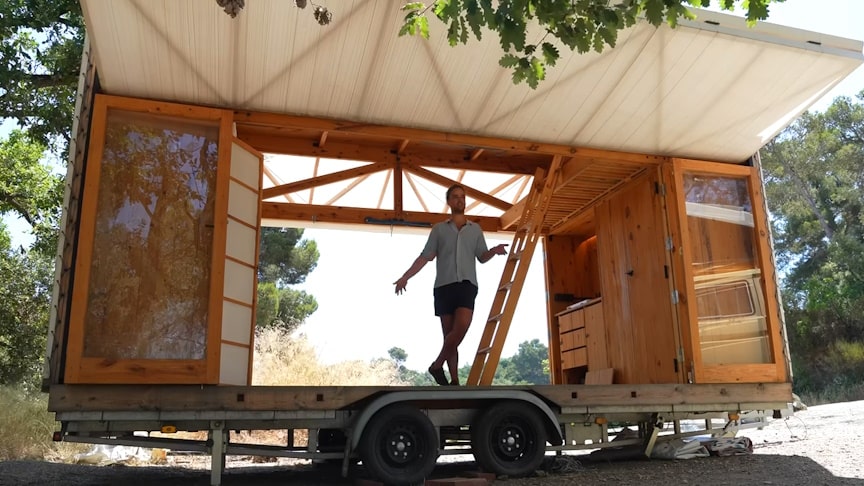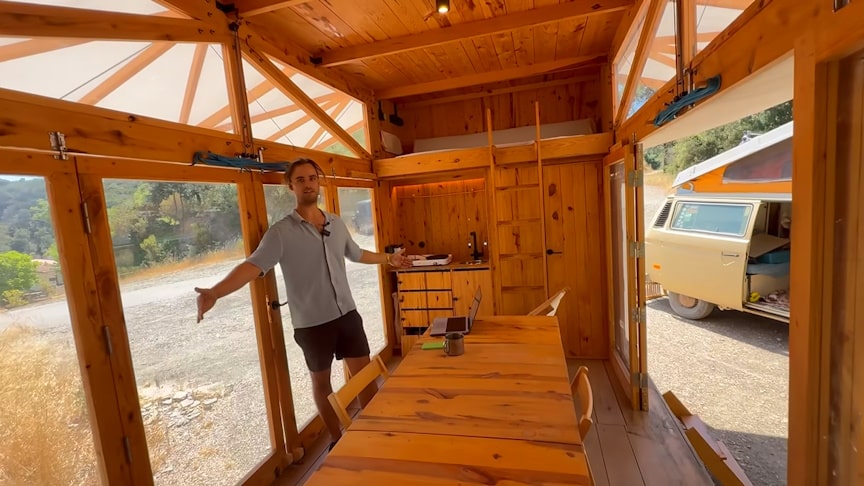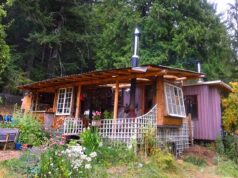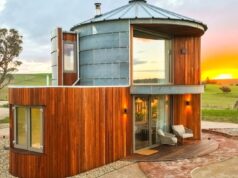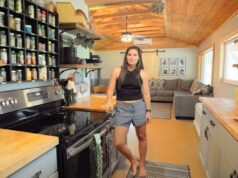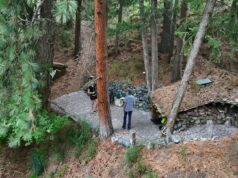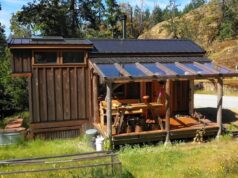As an experiment in how much living a small, low-cost structure can hold, a group of students built a house-on-wheels that expands outward—its glass doors and canvas sides swinging open like sails to catch the sun and breeze. Designed to blend with its surroundings rather than close them out, the mobile dwelling is not just transportable, but truly self-sufficient: solar-powered, and equipped with a closed-loop water system that recycles greywater for re-use—even enabling an “endless” shower.
source.image: Kirsten Dirksen
Inside, the structure is a study in restraint and purpose. At either end, two solid volumes serve as the core infrastructure: one houses a compact kitchen, bathroom, and utilities; the other holds storage, tools, and an entry door.
source.image: Kirsten Dirksen
Between them, the central space is left open and flexible, with fold-away furniture and a ladder leading to two sleeping shelves above. Everything has its place—and everything is used.
Advertisement
Built by students from the Institute for Advanced Architecture of Catalonia (IAAC), the home is called MO.CA, short for “Mobile Catalyst”—a name meant to reflect its role not just as a shelter, but as a spark for new ways of living lightly and intentionally.
The students built the home for roughly $10,000 in materials—not including their labor or the timber, which they harvested themselves by thinning the surrounding forest in the hills above Barcelona. Nick Nicolas Rotta, one of the students who showed us the home, estimates that a similar version could be self-built for about $20,000 to $25,000.

